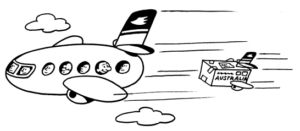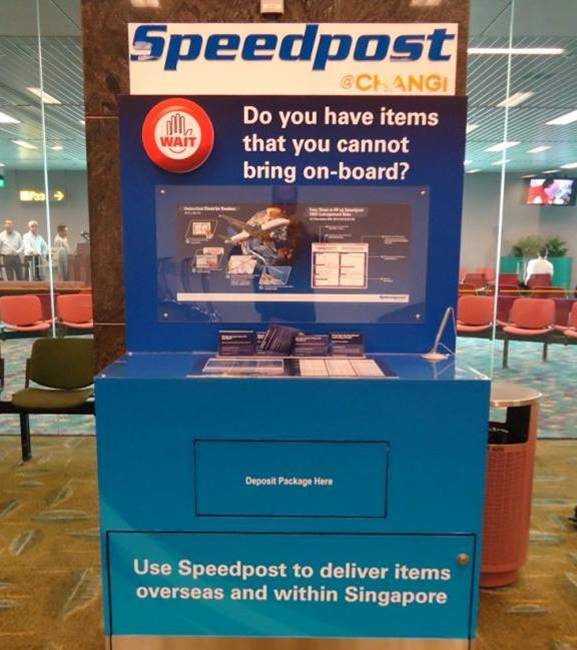
If you travel by air, you know how stringent security can be in airports around the world. Many items previously allowed onboard are now banned, confiscated and, in many cases, discarded by security personnel.
Losing a nail file or a pair of scissors may not seem like much, but hairdressers pay a lot for professional scissors; a letter opener may be a sentimental gift from a friend; a pocket knife could be an heirloom handed down from grandfather to father to son.
What can be done to keep these items out of the aircraft cabin, but safely delivered back to the owner to improve customer experience?
To improve customer experience, some airlines will put the offending item in a small pouch, store it in the aircraft’s baggage hold, and give it back to the passenger at the destination. But this service takes precious time before departure, and some airports simply don’t allow it. As a customer you have only two choices: give up the item forever, or give up your seat on the flight.
Allan in Australia proposed another solution to improve customer experience. He suggests:
“Many airline customers have become confused about which articles may be detected and rejected by security as they board domestic and international aircraft.
“My suggestion is to set up automated self-service mail-boxes near security screening that can dispense stamped, padded envelopes. If an article such as a penknife or nail file is rejected, the traveler can go immediately to the mailbox and quickly:
1. weigh the item and indicate the destination country,
2. place sufficient money in the machine (or use a credit card),
3. receive a stamped, padded, self-sealing envelope,
4. address it to themselves at their destination,
5. drop it in the mailbox, and
6. get back to the gate in plenty of time for their flight.
“The franchise for these mailboxes could be sold to bookstores or coffee shop proprietors at each airport. This would help security resolve the distress innocent travelers suffer when they must surrender personal items of great sentimental value.
“Many airports have post offices, but they are rarely close to security, and never open 24 hours – and we all know about slow-moving lines at security screening.”
By focusing on customer concerns, Allan came up with an idea that is quick, easy, practical, cost-effective, reduces hassles for everyone, requires no additional labor and opens up a new avenue for revenue and compliments from very appreciative customers.
PS: Since this article was first posted, this great idea has come to fruition at Changi Airport in Singapore. Take a look!!
Key Learning Point To Improve Customer Experience
Customers are emotional creatures and may have concerns not addressed by your focus on speed, accuracy, price, security, size, weight or location. Helping customers comply with procedures is important. But helping them feel good about their compliance is very important, too. Find ways to do both and you’ll gain your customers’ appreciation, recognition and respect and you will improve customer experience.
Action Steps To Improve Customer Experience
Put yourself in your customers’ shoes. What’s the greatest inconvenience customers must endure when doing business with you? What can you do to make that process more convenient, flexible, personal or attractive to improve customer experience? How can you anticipate and help them avoid the hassle? If they must comply, how can you recognize, praise or congratulate them for getting it done?
Being a customer is not always easy. At your place of business, make it as painless and rewarding as you can to improve customer experience.
——————————————————————————————————————————
You may use this article in your free newsletter, website or publication providing you include this complete statement (below) with active links to the websites:
Copyright, Ron Kaufman. Used with permission. Ron Kaufman is the world’s leading educator and motivator for upgrading customer service and uplifting service culture. He is author of the bestselling “Uplifting Service” book and founder of Uplifting Service. To enjoy more customer service training and service culture articles, visit www.RonKaufman.com.
For commercial use of this article in a paid newsletter, publication, or training program, please contact us.




